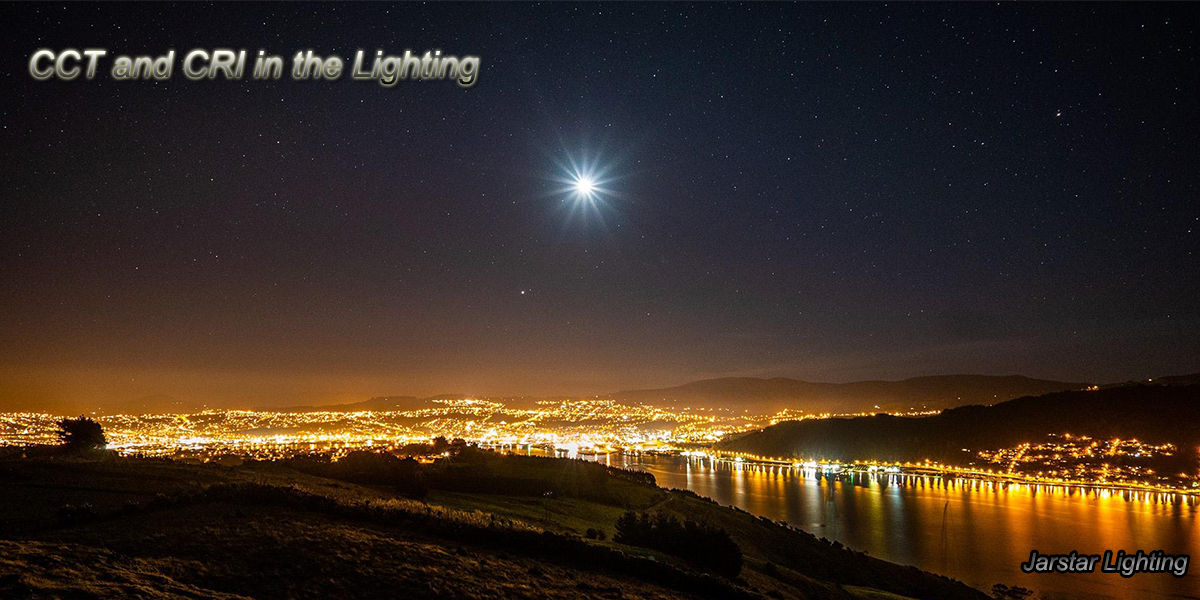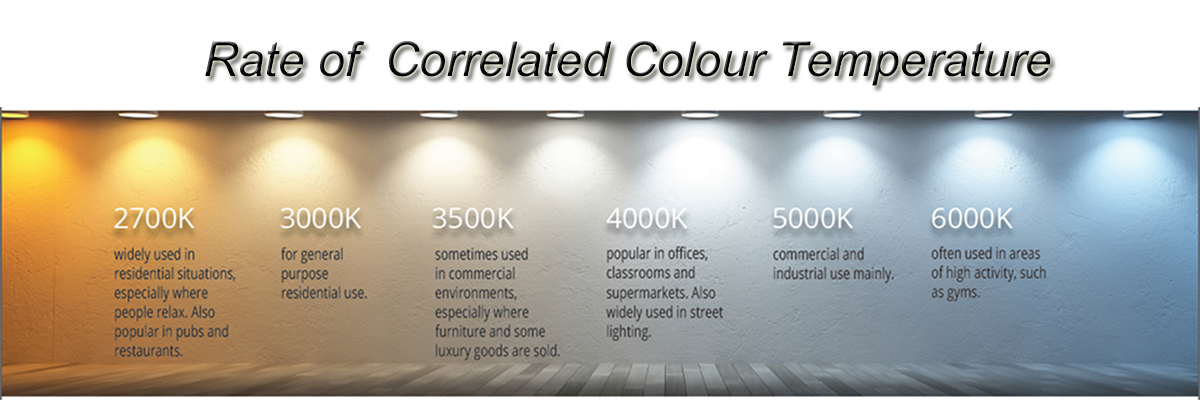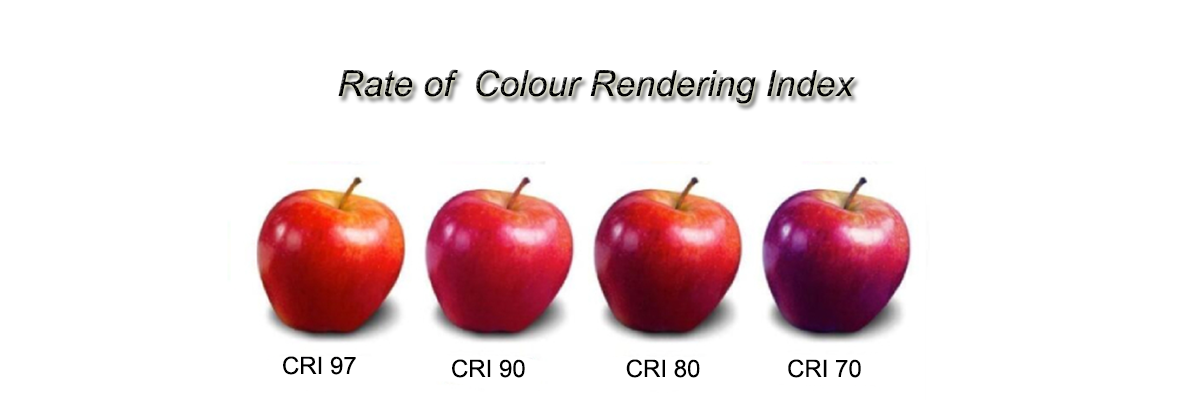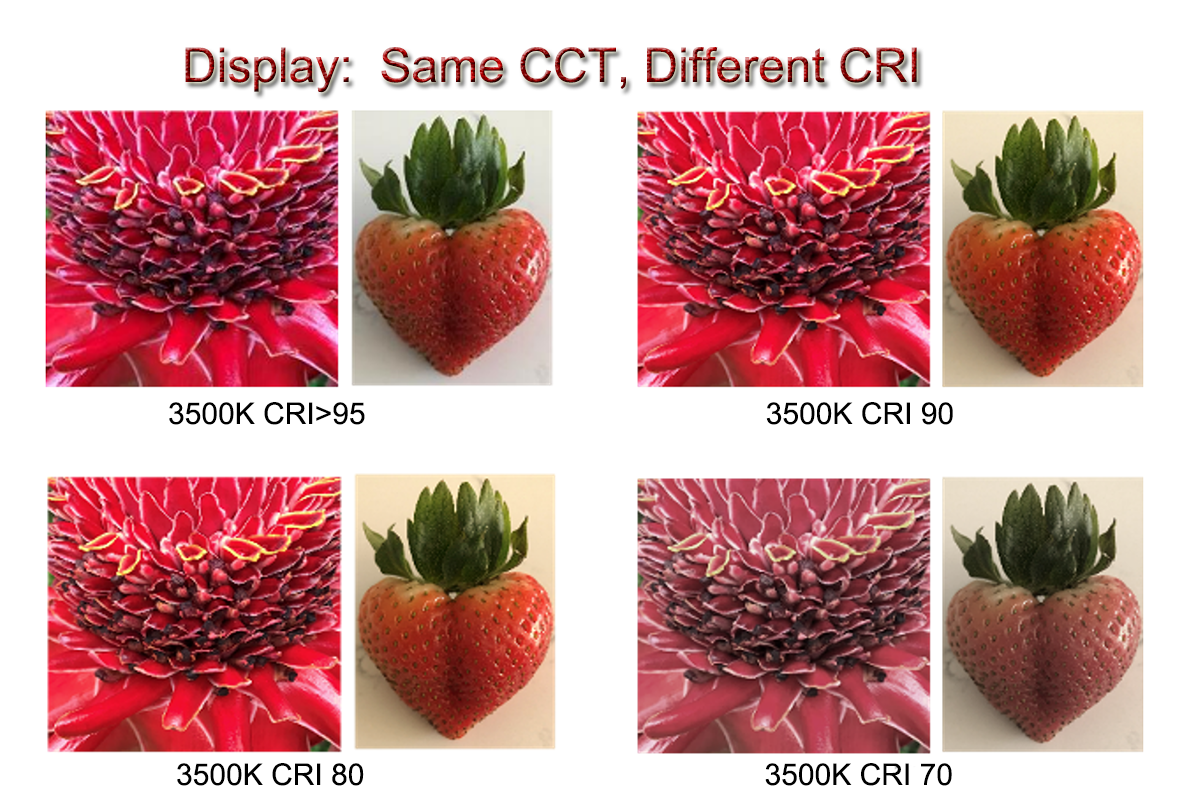Today, LED lighting has emerged as the dominant choice in the market, primarily due to its energy efficiency, long lifespan, and minimal heat emission. It has outperformed other lighting technologies by a wide margin. These consume up to 90% less energy compared to incandescent lams, boast a lifespan of up to 40 times longer, and deliver high-quality illumination.

While there are many factors to understand and select LED lights, CCT (Correlated Colour Temperature) and CRI (Colour Rendering Index) are two of the most important characteristics used to describe the colour properties of light sources. They help one understand the quality and appearance of light emitted by a source and are essential when selecting lighting for various applications.
For this reason, it is important to understand the difference between the two terms relevant to LED lighting: CCT and CRI.
What is CCT, or Correlated Color Temperature?
Color temperature (CCT) is a technical term used to indicate that the light contains color components, that is, a measure of whether the light emitted by the lamp is yellow or blue. The unit of measurement is "K" (Kelvin), and the most common CCT is between 2700K and 6500K. The higher the Kelvin level, the whiter the light.

What is CRI, or Color Rendering Index?
The CRI value of a light source describes how accurately a light source illuminates colors of an object. It is scored on a scale with 0-100, 100 being the best, means the colours under artificial light are displayed in the same way as in natural sunlight.. Different CRIs show different colors under the same object. CRI is a specification of an LED luminaire that demonstrates the realistic colour rendering of illuminated objects.

The difference between CRI and CCT
As explained above, CCT and CRI measure two different aspects of color.CRI should not be confused with correlated color temperature (CCT). While color temperature can vary throughout the day, CRI doesn’t change. CCT tells us the color of the light emitted by the LED chips and is immediately visible to the casual observer by looking directly at the light source.
On the other hand, the CRI value does not tell us the color of the light itself. Rather, it tells us about the color appearance of objects under the light source (the light source "renders" the colors of an object, hence the term).
Example, at the same color temperature, different CRI, the object takes on different appearance colors

The relationship between CCT and CRI
Although CCT and CRI describe two different aspects of light color, they are nonetheless intimately related in their calculations. As mentioned above, CRI can be thought of as determining a light source's accuracy. In determining "accurate," however, we must first determine what the reference point for this "accuracy" should be.
When we refer to light accuracy, we must first determine the color temperature of a light source, so that we have a proper reference point. Each color temperature has a "reference standard" which is considered to be the light source that provides the most accurate, or natural lighting.
Why CCT is more fundamental and important than CRI
The explanation above should have made clear that CRI requires a color temperature value in order to determine what we are comparing color appearance against.
CRI is certainly an important metric that helps explain color quality, but it is almost meaningless when used alone without a color temperature value. Think first about the color temperature requirements for your application, and then worry about CRI after.
In conclusion, striking a balance between CCT and CRI in lighting design is essential to achieve the desired lighting quality and aesthetics for a given space. Depending on the application and desired outcome, selecting the right combination is critical to achieving the intended lighting effect and meeting the specific needs of the space or task.